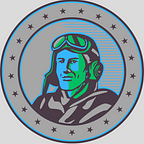Java-Based Flight Management Systems
Flight Management Systems (FMS):
Flight Management Systems are complex computer systems used in modern aircraft. They are designed to automate and support the flight process for pilots. FMS performs various tasks such as planning the aircraft’s route, controlling the flight trajectory with the autopilot, processing navigation data, managing fuel, and transmitting information to airports and air traffic control centers.
FMS optimizes the aircraft’s flight by using data from flight computers, navigation databases, sensors, and other systems. It performs operations like calculating the optimal route to the destination, considering weather conditions and fuel consumption. FMS is an essential tool for enhancing flight safety, reducing pilot workload, and ensuring flight efficiency.
The Relationship Between FMS and Java Applications:
Java is a platform-independent programming language, meaning Java applications can run on various operating systems. Therefore, it has become a preferred language to ensure compatibility among different flight systems and applications. The popularity of Java in the aviation sector is associated with its reliability, portability, and capabilities to develop large and complex systems. We talked about these abilities in general in my previous article. However, I think it would be helpful to mention it again.
Advantages of Java in Aviation Applications:
- Hardware Independence: Java allows applications to work without being tied to specific hardware. This enables the development of applications compatible with different aircraft models and avionics systems. Rather than creating separate applications for each aircraft or system, Java applications can run on all platforms.
- Multi-Platform Support: Java applications can run on various operating systems like Windows, Linux, macOS, etc. This simplifies the software development process and enables applications to be quickly deployed on different devices and computers used in the aviation industry.
- Ease of Application Updates and Maintenance: Java’s platform-independent nature means that updating or maintaining an application requires doing so only once. Updates or maintenance are done in a single codebase to ensure the application runs on all platforms and then distributed to all devices.
- Security and Isolation: Java’s platform-independent nature also contributes to higher application security. Java Virtual Machine (JVM) runs applications in an isolated layer, restricting their interaction with other applications or system components. This prevents security vulnerabilities from spreading across applications or the operating system.
- High Portability: Java’s platform independence ensures applications’ portability. In aviation, where aircraft and systems operate in different regions, Java applications allow aircraft to work seamlessly with systems in different locations.
- Application Integration: Aviation software often interacts with different systems. Java’s platform-independent nature simplifies data integration and communication between different systems. Java applications can facilitate data exchange and communication effectively and consistently.
Examples of Java-Based Flight Management Systems:
Here are some examples of Java-based flight management systems:
ARINC 424: ARINC 424 is a standard widely used for developing Java-based flight management systems. It is used for representing and managing flight routes, assisting airlines in flight planning and navigation management.
FlightGear: FlightGear is an open-source flight simulation platform that can be utilized to develop Java-based flight management systems. Airlines can use this platform for pilot training and simulating flight operations.
OpenFMS: OpenFMS is a Java-based flight management system project that provides various essential flight management functions, including flight planning and route tracking.
Lufthansa Systems Lido/Flight: Lido/Flight is a Java-based flight planning and navigation system. Airlines can use this system to create flight plans, interact with air traffic management, and provide flight information to flight crews.
Contributions and Advantages of Java-Based Flight Management Systems:
Java-based flight management systems offer several advantages to airlines and air traffic management:
- Operational Efficiency: These applications enhance operational efficiency for airlines and optimize business processes. Automating flight planning and tracking processes leads to more effective resource and personnel management.
- Safety and Collaboration: Java-based systems contribute to increased safety and collaboration in air traffic management. Integration with air traffic control enables efficient data sharing and automation of air traffic management processes.
- Environmental Impact, Cost, and Fuel Savings: Optimizing flight planning and route calculations leads to fuel savings and cost reduction for airlines. This also positively impacts the environment by reducing carbon emissions.
- Air Traffic Management: Flight management systems, integrated with air traffic management, enhance the organization and safety of air traffic. Data sharing and collaboration contribute to more efficient air traffic management.
These Java-based flight management systems play a crucial role in the aviation industry, adapting to technological advancements and meeting ever-increasing demands. They provide flexible, reliable, and up-to-date solutions for aviation software, ensuring the smooth and efficient operation of aircraft systems.
“Get ready to dive into the impact of Java applications on Display Systems (PFD, ND, MFD) and Embedded Avionics Software! In our next article, we will explore the pivotal role of Java in the development of aircraft embedded software and avionics systems. By delving into the technology behind vital display systems like PFDs, NDs, and MFDs, we will uncover how these applications enhance flight safety, provide efficient navigation, and contribute to critical decision-making processes for pilots. Moreover, we will demonstrate how Java’s platform-independent nature ensures seamless and effective operation across diverse aircraft systems. By closely examining this significant technological advancement in the aviation industry, we will witness how it propels aircraft safety and performance to new heights. Stay tuned to discover how Java applications make a difference in the world of aviation!”
